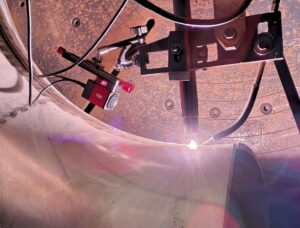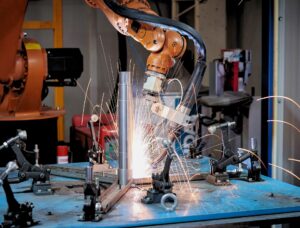Why visual records are becoming essential in today’s quality assurance workflows.
In this blog, we’ll examine how welding cameras enhance weld documentation and traceability, and why visual records are becoming essential components of modern quality assurance workflows. In today’s high-stakes industries—like aerospace, nuclear, and oil & gas—weld quality is not just a goal, it’s a regulatory requirement. Alongside certified welders and qualified procedures, companies must demonstrate that every weld meets stringent standards. That’s where welding cameras come in—not just for live monitoring, but for documentation and traceability. With video evidence of the weld process, companies can back up inspection reports, support audits, and resolve quality issues quickly and confidently. Let’s explore how weld monitoring systems are transforming weld documentation—and why forward-thinking fabricators are adopting them as a core part of their QA strategy.
1. Creating a Visual Record of Each Weld
Welding cameras provide real-time video footage of the arc, weld pool, and surrounding metal. When recorded, this footage becomes a permanent visual record—an invaluable asset for weld quality control teams.
Benefits include:
- Documenting weld start/end times, travel speed, and arc behavior
- Verifying joint preparation and fit-up before welding begins
- Comparing video footage to welding procedures (WPS) and standards
- Capturing operator technique, heat input, and deposition patterns
This type of documentation is particularly useful in industries where every weld needs to be accounted for, such as nuclear construction, pressure vessel fabrication, or defense manufacturing.
2. Improving Traceability Across Projects
Traceability means being able to track every weld back to its origin—including who performed it, when, and how. Welding cameras add a layer of digital traceability by tying visual records to other weld data.
Here’s how it works:
- Cameras are often integrated with weld data logging systems
- Each video file can be time-stamped and tagged with welder ID, joint number, and heat number
- Combined with sensors and weld parameters (voltage, current, speed), footage gives a 360° view of the weld event
This makes it easier to trace issues back to the source, resolve customer complaints, or demonstrate compliance during third-party inspections.
3. Supporting Continuous Improvement and Training
Video documentation isn’t just about proving compliance—it’s also a valuable tool for internal quality improvement.
Weld engineers and supervisors can:
- Review footage to identify operator habits that affect weld quality
- Compare successful vs. failed welds for process improvement
- Use clips for training new welders on best practices
- Analyze root causes of porosity, undercut, or lack of fusion
By reviewing actual weld videos, teams can make evidence-based decisions, rather than relying on written reports alone.
4. Streamlining Reporting and Compliance
Many industries require detailed documentation for ASME, ISO, or AWS standards. Manually compiling reports with only photos and text is time-consuming and incomplete.
With welding cameras, you can:
- Instantly generate visual documentation for inspection reports
- Attach video files to digital weld maps or quality logs
- Provide proof of conformance during audits or customer reviews
- Reduce disputes by showing exactly what happened during welding
This not only saves time—it builds trust and transparency with clients, inspectors, and regulators.
5. Integrating with Digital Weld Management Systems
Modern fabrication shops are moving toward Industry 4.0, where everything is connected—including welding equipment. Welding cameras can be integrated with:
- Digital weld tracking software
- Automated quality inspection systems
- Weld defect detection
- Cloud storage for long-term archiving
These integrations allow companies to scale up documentation without increasing overhead, especially for large projects with hundreds of welds.
Final Thoughts: How Welding Cameras Enhance Weld Documentation
Welding cameras do more than enhance operator vision—they enable a new standard of documentation, one that’s visual, verifiable, and audit-ready. Whether you’re fabricating pressure vessels, assembling aerospace components, or building critical infrastructure, visual weld records can protect your company, your clients, and your reputation.
Explore Weld Monitoring Systems with Built-in Documentation Tools
At Mecaweld, we offer welding camera solutions that integrate seamlessly into your QA workflow—ensuring every weld is captured, documented, and traceable. Contact us today to learn more.



